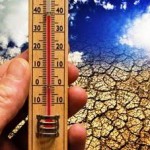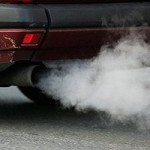The dome, a giant steel containment device, left Port Fourchon, Louisiana, Wednesday on a barge for the ruptured undersea oil well some 52 km off Venice, Louisiana, where the container will be placed over the leaking well.
“If all goes according to plan, we should begin the process of processing the fluid and stop the spilling to the sea on Monday,” Doug Suttles, BP’s Chief Operating Officer, said Wednesday.
BP said it already stopped one of the three leaks in the wrecked wellhead.
The newly built 100-ton container will collect the leaking oil, which would be sucked up to a drill ship on the surface, according to BP. If this attempt proves successful, BP said, it would deploy a second smaller dome to deal with another leak.
But Suttles admitted that the technique has never been attempted at the depth of these leaks at some 5,000 feet below sea level.
The dome is expected to reach the well site in 12 hours and will be placed in position after several days.
Meanwhile, efforts are also underway above and below the surface of the Gulf of Mexico to stop oil leak to protect the U.S. coast. Workers have deployed miles of protective booms to block the huge slick and used dispersants to try to break up the thick oil as it slowly drifted toward shore.

Two specially equipped “burn rigs” set fire to patches of crude oil near the undersea gusher, a BP executive said Wednesday afternoon. Booms, skimmers and chemical dispersants are being used to corral and break up the oil before it hits the sensitive wetlands of Louisiana or the beaches of Mississippi, Alabama and Florida farther east.
Patches of oil reportedly crept to within two miles of the Louisiana bayous and threaten to reach shore if wind and current change. But authorities said calm weather will help oil stay offshore in the next three days. A 72-hour forecast shows winds shifting to the south and blowing about 12-17 miles per hour, which is likely to produce only “a little bit of movement on the fringes,” said Charlie Henry with the National Oceanographic & Atmospheric Administration.
However, coastal areas likely to be affected are on alert for the first major landfall of the oil slick, as experts warned that the oil could kill wildlife and damage livelihoods for thousands of people living along in the coastal states.
Parish and state officials in Louisiana have enacted plans to keep the oil out of the marshes at the heart of the state’s fishing industry and wildlife habitat. “If it gets back into the backwaters, into the bayous, that’s where we’ll kill off the food chain,” said Billy Nungesser, President of Plaquemines Parish. “That’s where it will devastate southern Louisiana for years to come, and we will lose our heritage in the fishing industry,” he said.
Nungesser said his staff has divided up the parish into 13 separate zones for booms to be deployed, depending on the trajectory of the oil spill.
A large barge arrived from Port Fourchon Tuesday night and was deployed from Venice Wednesday afternoon to be a supply post for fishing boats and other crews to deploy soft, white absorbent booms when oil gets closer to shore.
“We’re drawing our line in the sand and we’re going to draw it right where the marsh begins,” Nungesser said. “There is no cleanup in Plaquemines Parish. Prevention is the only way to do this and that’s for all of coastal Louisiana,” he said.
An explosion occurred April 20 at the Deepwater Horizon drilling rig, about 42 km southeast of Venice, Louisiana. Eleven workers were killed. The rig, owned by Swiss-based Transocean and leased by BP, sank April 22 after burning for roughly 36 hours and the untapped wellhead continues gushing oil into the Gulf of Mexico.
About 1.6 million gallons of oil have spilled since the explosion, according to the Coast Guard. Experts warn of an environmental and economic catastrophe if oil continues to leak.
Source: Xinhua, May 5, 2010














